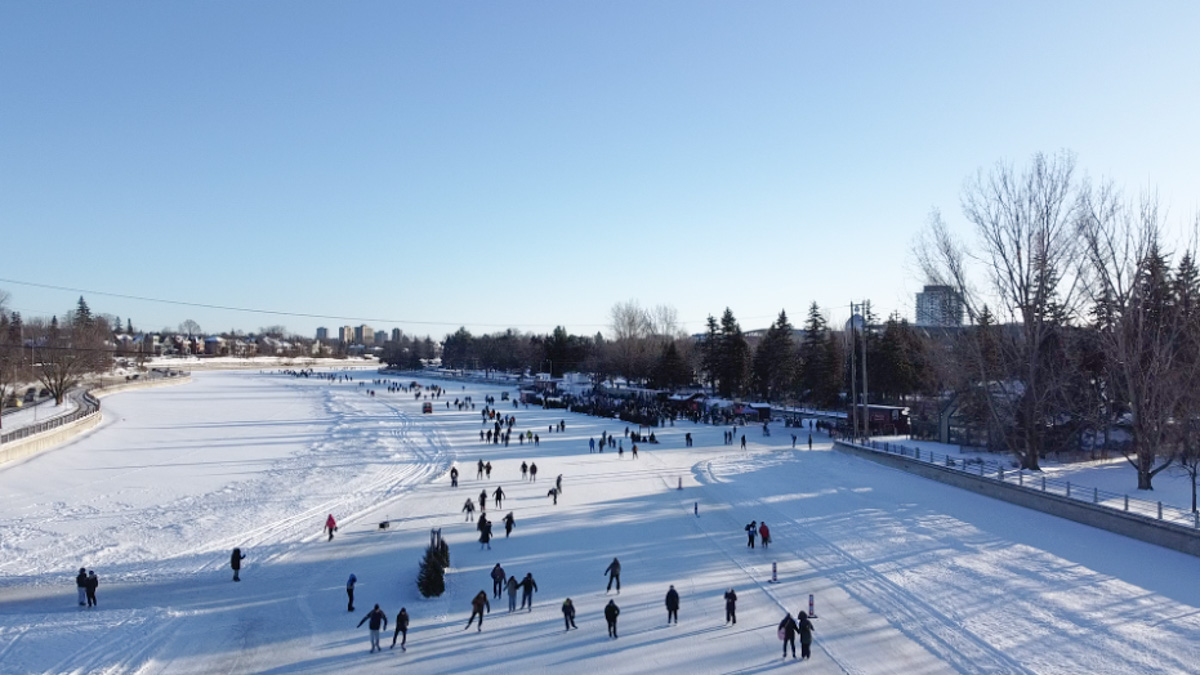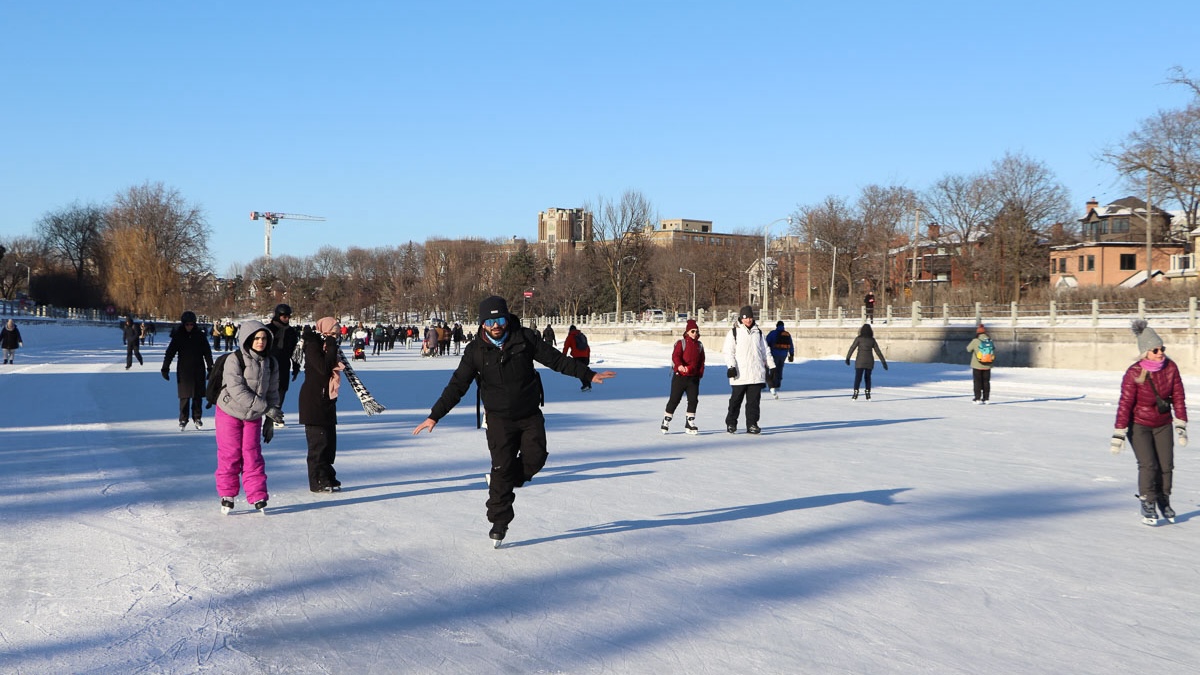Skaters in Ottawa have enjoyed the best conditions in years on the Rideau Canal Skateway thanks to cold temperatures and limited snowfall, but that hasn’t stopped work on ways to mitigate the effects of climate change by researchers, who warn this year could be an outlier.
“The new norm is to expect wild cards,” said David Phillips, an emeritus climatologist who recently retired from Environment and Climate Change Canada. “Like we saw this year and last year, we’re going to see this back-and-forth yo-yo kind of weather where you can’t count on skating on the Rideau.”
Average winter temperatures have increased by 2.6 C since the Canal welcomed its first cohort of skaters in 1971, says Ryan Katz-Rosene, an assistant professor of political science and geography at the University of Ottawa.
Within this same 55-year span, the average skating season has decreased from 70 days to just 25. If temperatures continue to warm on a linear scale, he said, we have less than 40 years before the average skating season drops below two weeks.
“It’s a really poignant example of the human impacts of climate change in our community,” said Katz-Rosene, who studies the intersection between climate change and political economy. “The biggest surprise is that the impacts came quicker than we expected.”

Engineering professor Shawn Kenny and his Carleton University research team have focused on how to sustain the Skateway in the face of changing conditions. In partnership with the National Capital Commission (NCC), the team studies weather patterns and ice thickness to understand how warmer temperatures will impact the Skateway.
“We know that temperatures are going to get warmer and that, in turn, makes the number of winter days less per season,” he said. “We wanted to calibrate these models for today’s conditions … so that we can have confidence in projecting forward of what we think will happen in the 2050 to 2080 range.”
He said this year’s success on the Skateway — a combination of colder temperatures and below-average snowfall — is not indicative of long-term trends.
“In terms of short-term effects, it’s just nature and the weather patterns that have been happening,” Kenny said. “It was fortuitous in the sense that’s how this year evolved.”
Ottawa has had a lower average mean temperature in January than most of the past 10 years, and the lowest snowfall in nine years.
“For growing ice, snow is not a good thing because the snow insulates the ice so that the water below can’t freeze … that snow insulates the air from the ice, so that the ice doesn’t form,” Phillips said. “If you don’t have very much snow, then the water below that ice will freeze more readily.”
Contrasting snowfall patterns over the last three winters have been an important research point for Kenny and his team. During the 2022-23 winter when the Canal didn’t open, he said Ottawa experienced 160 per cent more snow than climate norms predicted.
“That really illustrated the negative effects of snowfall,” he said.
Having studied the impacts of a heavy snowfall as an insulating layer on the ice, Kenny said his team has been researching ways to remove snow from the Skateway using lighter machines, alongside other methods to preserve the Canal as winter temperatures rise.
For example, researchers are looking at ice thickness standards. The NCC now requires 30 centimetres of clear ice, but Kenny said his team is developing models to see if this standard can be safely lowered.
Despite increased human efforts to keep the Rideau Canal Skateway viable, Katz-Rosene said cost projections also put the future of the Skateway on thin ice.
Maintenance costs average $1 million per year, said NCC spokeswoman Maryam El-Akhrass.
“At what point is (the NCC) going to say, ‘is this worth it if the forecast looks like we might get a week of skating?’” Katz-Rosene said. “We could, in theory, have skating on the canal for another 40 years or more. But I think the point of that cost analysis where they just decide not to open is going to come much sooner.”
Phillips says he hopes skaters take advantage of this year’s skating season, realizing that optimal Canal-freezing temperatures can’t be taken for granted in future.
February’s moderate temperatures are another factor in the “ideal weather year” for the Rideau Canal Skateway, Phillips said, as temperatures hovering around -5 C will encourage more people to go on the Canal and participate in Winterlude without having to endure the extreme cold.
“That’s why I think people should even add a little bit more enjoyment to this winter,” he said. “This might not be one of the winters that you’re going to see again in the future.”




